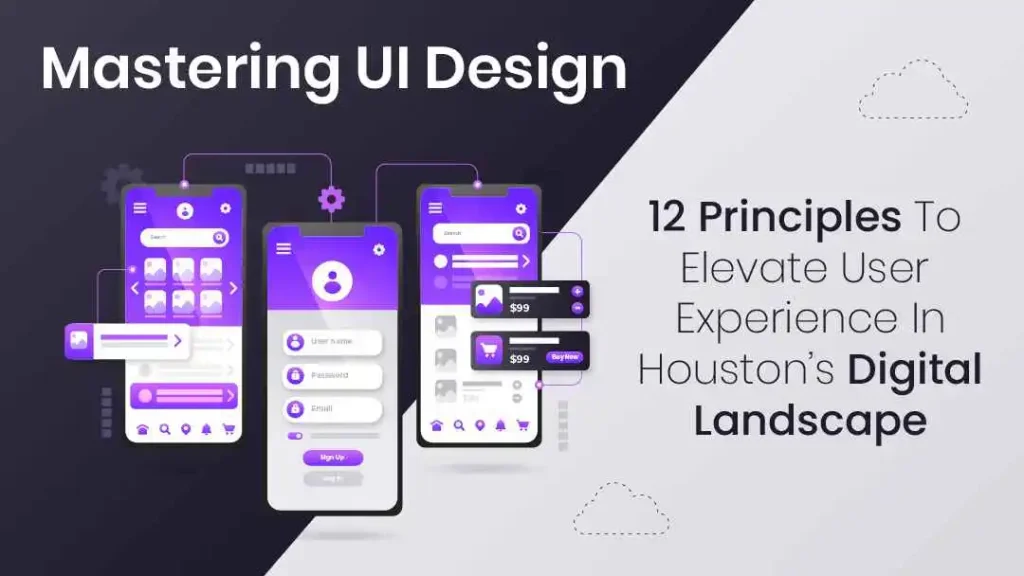- Admin
- Last Update on
Mastering UI Design: 12 Principles to Elevate User Experience in Houston’s Digital Landscape
Houston, TX, is transforming into a technology hub, emphasizing the importance of mastering user interface (UI) design. AAEIMAA Digital emphasizes the significance of a well-structured UI in user perception. Understanding the 12 basic rules of UI design is crucial for both experienced and new developers to create more user-friendly and appealing UXs. Implementing these principles can enhance digital experiences.

1. Clarity
Try to visualize the process of looking through a website, which has all the buttons and texts visible and understandable. A typical example of clarity is the search box on the google.com web page. It is straightforward, easy to find, and self-explanatory, making it quite clear to users where they need to place their search text.
2. Consistency
Consistency in design refers to necessarily using similar components across the platform. There is consistency in the design of the Apple website, where design elements such as fonts, colors, and button styles are used throughout the app design. This is because users are and will always be ready to use this interface type because it is friendly.
3. Feedback
Feedback informs users about their actions. For example, when you submit a form on LinkedIn, you receive a confirmation message or visual cue indicating success. This immediate response reassures users that their action is completed.
4. Efficiency
Efficiency is about making tasks quicker for users. Take Amazon’s one-click purchase option. It simplifies the checkout process, allowing users to buy products swiftly without navigating through multiple pages.
5. Hierarchy
Hierarchy helps users navigate through content. Consider the NY Times website where headlines are prominently displayed, guiding users to the most important news first. This visual hierarchy aids in easy content consumption.
6. Accessibility
Designing for accessibility ensures everyone can use your site. Websites like BBC’s are designed with features like screen reader support and adjustable text sizes, making their content accessible to all users.
7. Visual Design
In user engagement, aesthetics carry a heavy weight. Pinterest has an interface that is visually pleasing and attractive to users with a clean layout and beautiful pictures.
8. Responsiveness
Responsive design makes sure that the interfaces operate well on various gadgets. Instagram’s application, for example, smoothly changes from using it on smartphone or tablet thus providing easy experience over different screen sizes.
9. Simplicity
Simplicity means excluding things that are not needed. The homepage of Airbnb is characterized by a simple design that minimizes distractions hence allowing users to find their desired accommodation easily and book online as per need.
10. Intuitiveness
Intuitive design refers to how easy it is to use any interface. One can easily listen to their favorite songs since the interface of Spotify is intuitive; it has clearly labelled menus for navigation as well as uncomplicated music controls.
11. Flexibility
Letting go of customization gives way to an open and adaptable experience for consumers. For instance, Google Workspace provides diverse options in its tools for modification which makes the user workspace tailored according to individual needs.
12. Error Prevention
Error prevention is essential for preventing mistakes by users. A draft-saving capability in Gmail protects against losing an email case should you happen to click off it, avoiding possible heartache.
By using these twelve principles in your user interface design process you will have interactive and friendly digital experiences that thus become unique in the Houston marketplace. AAEIMAA Digital stands for taking you higher with UI designs and making users happy.